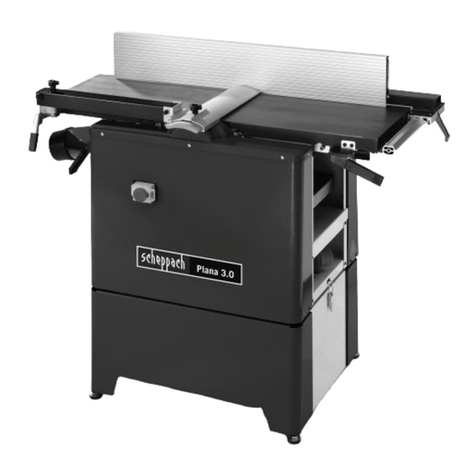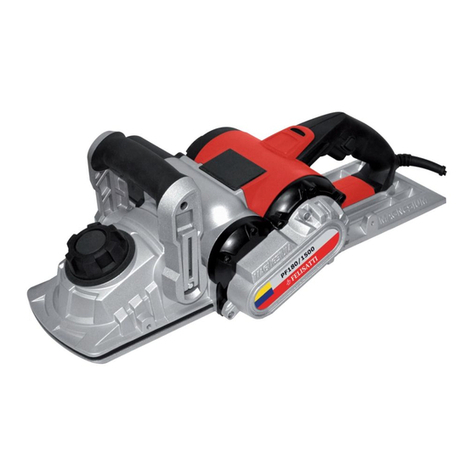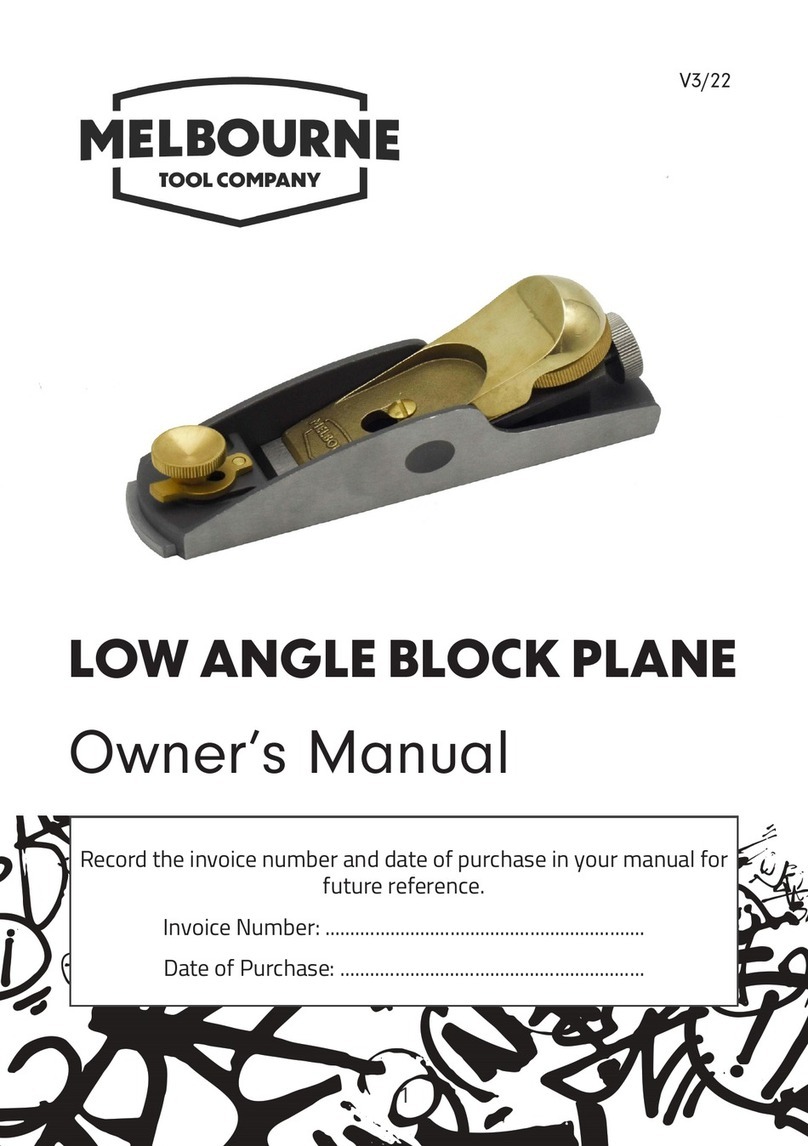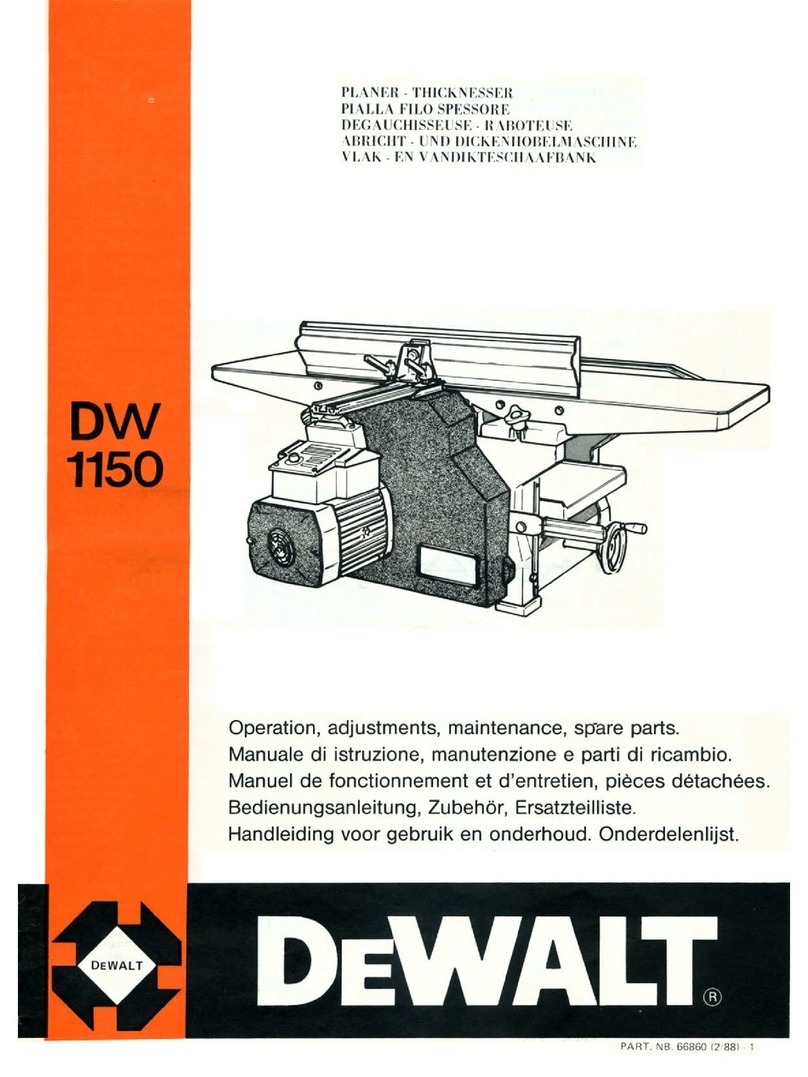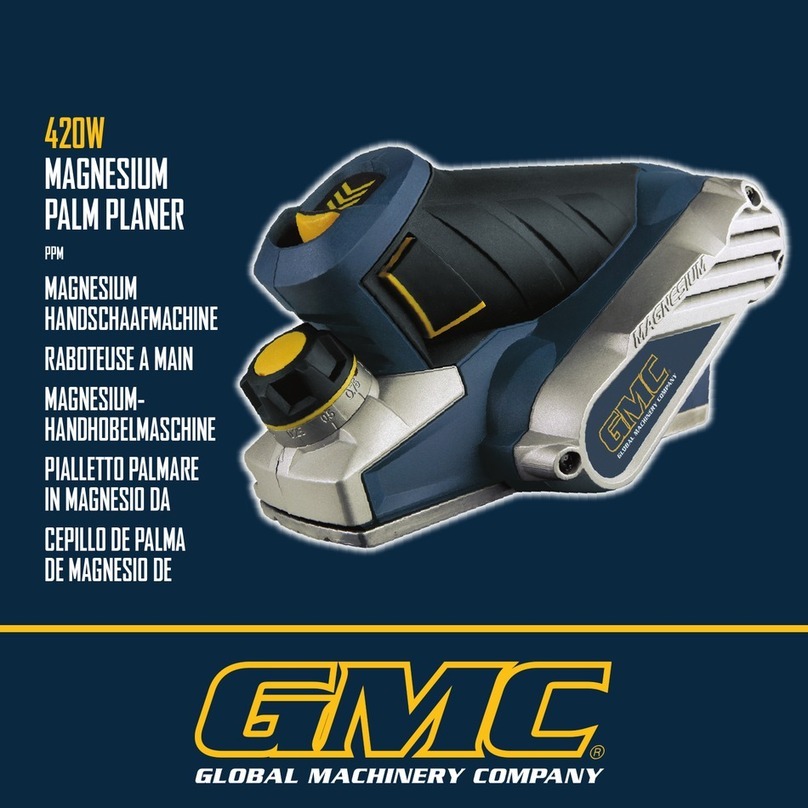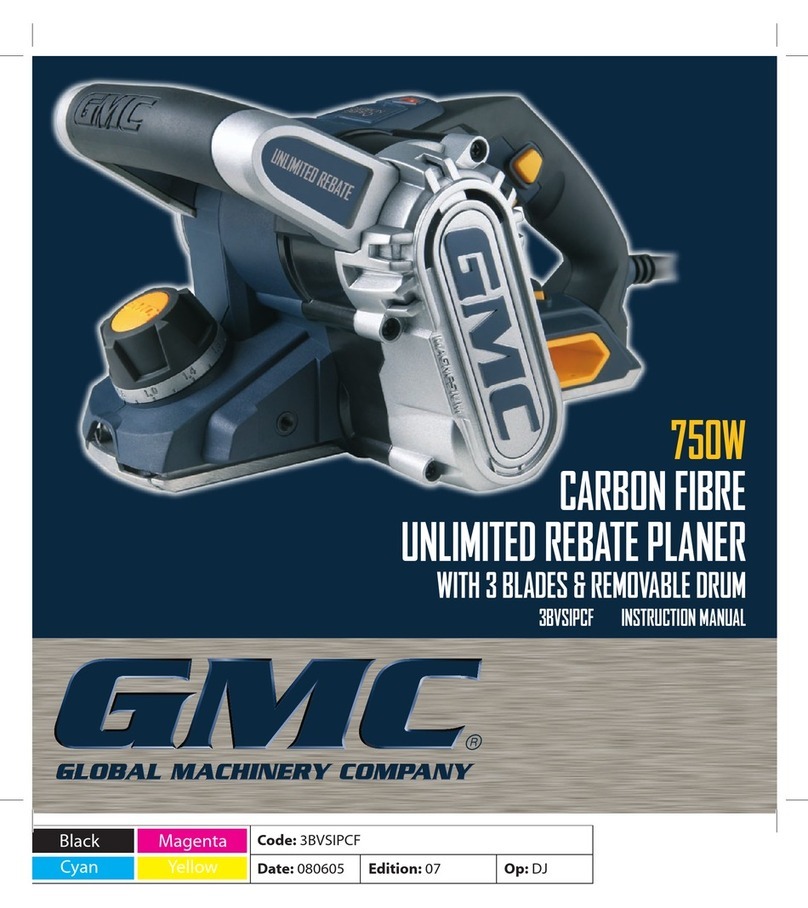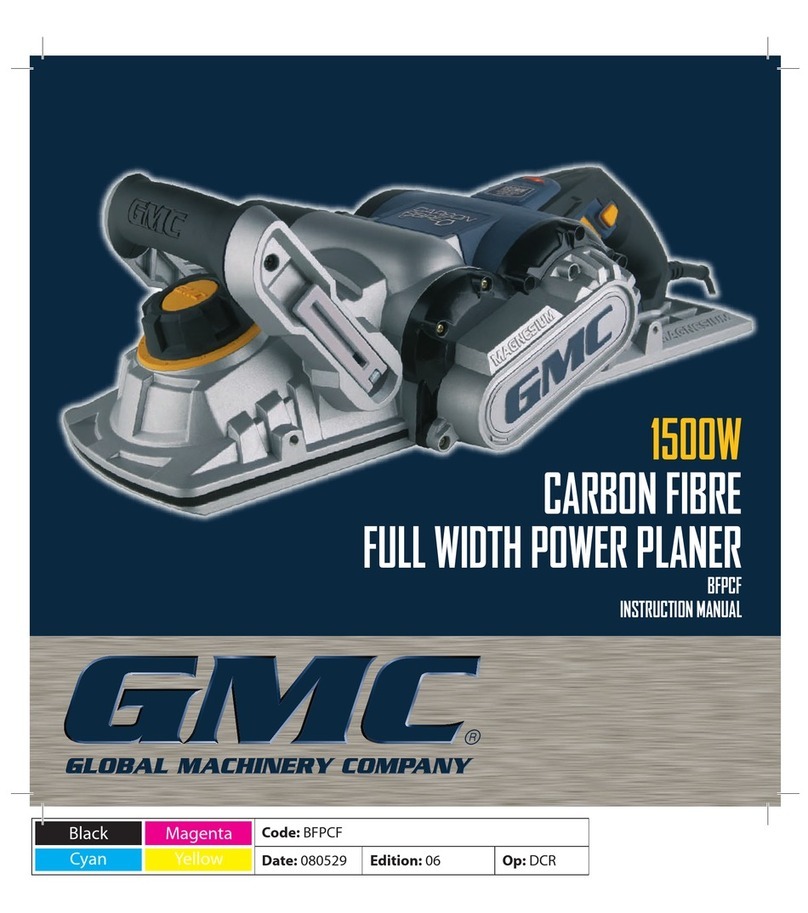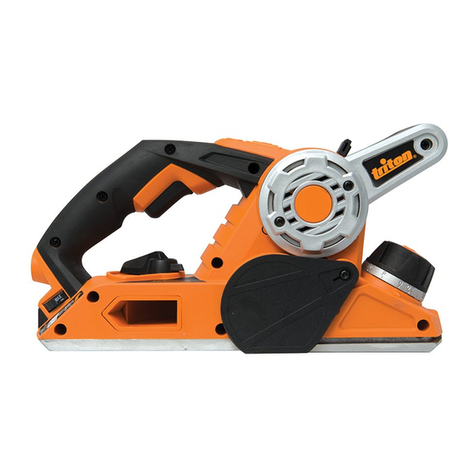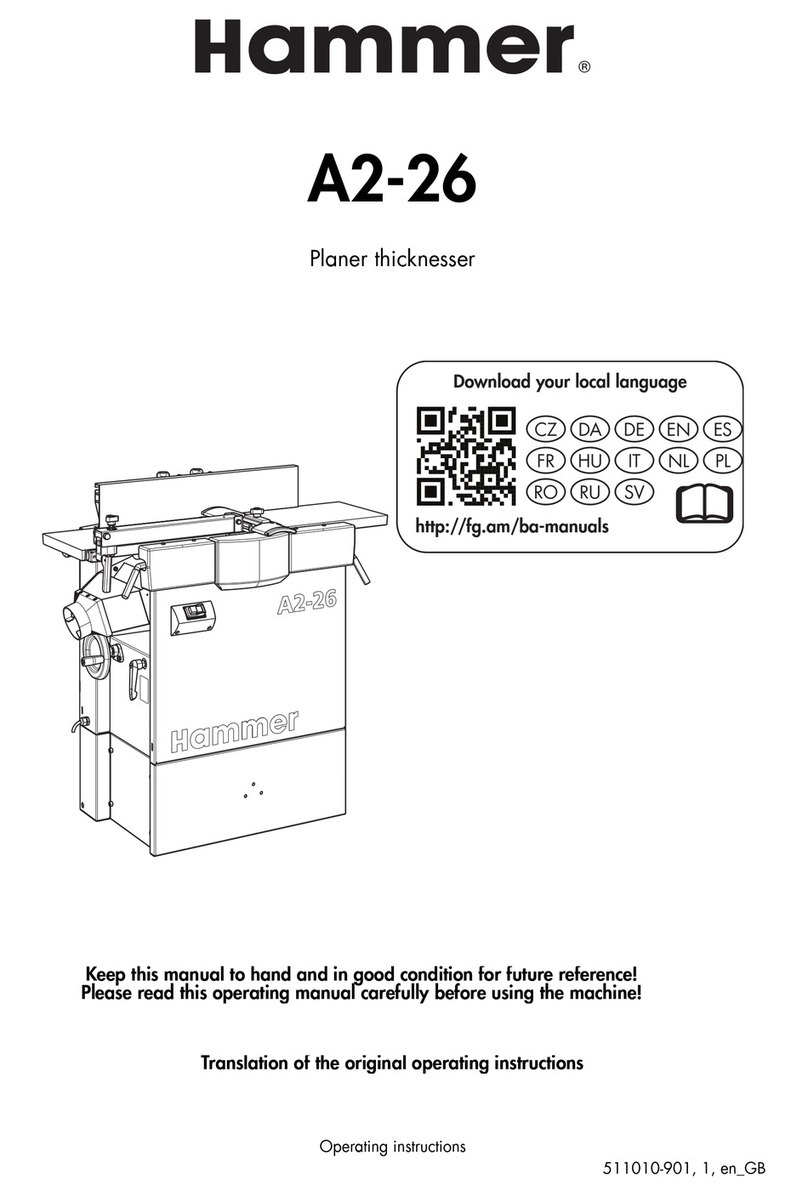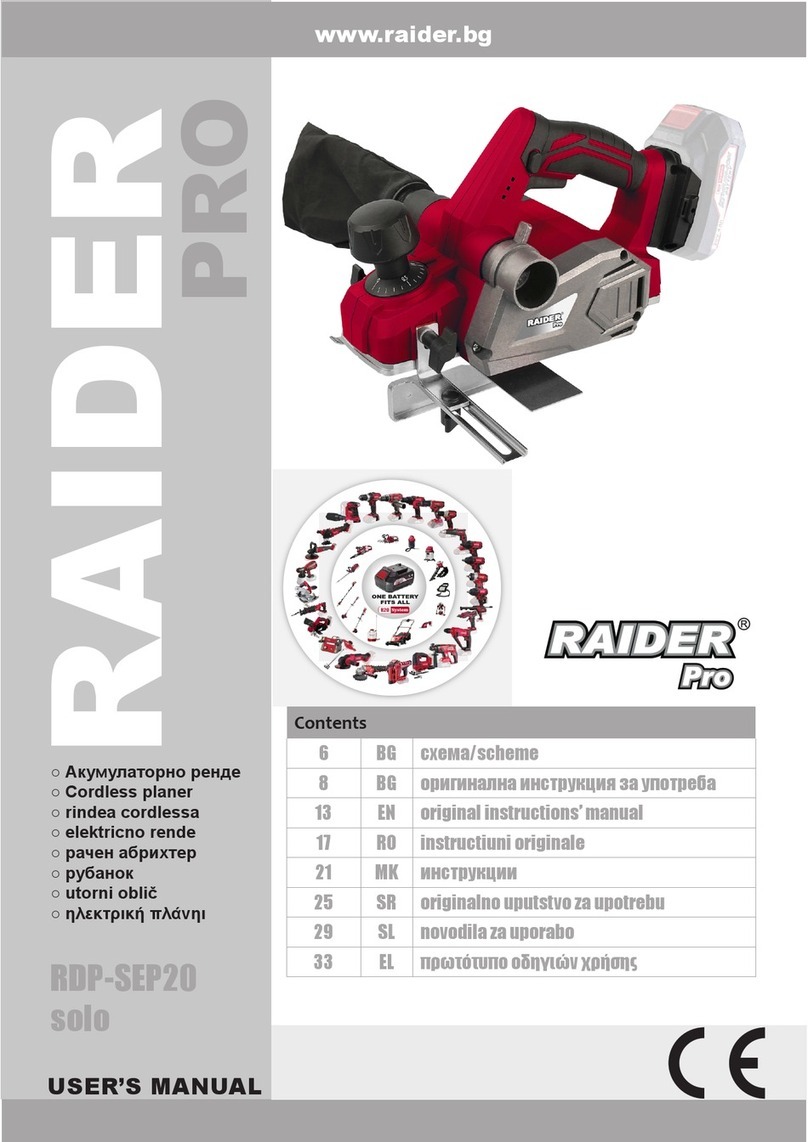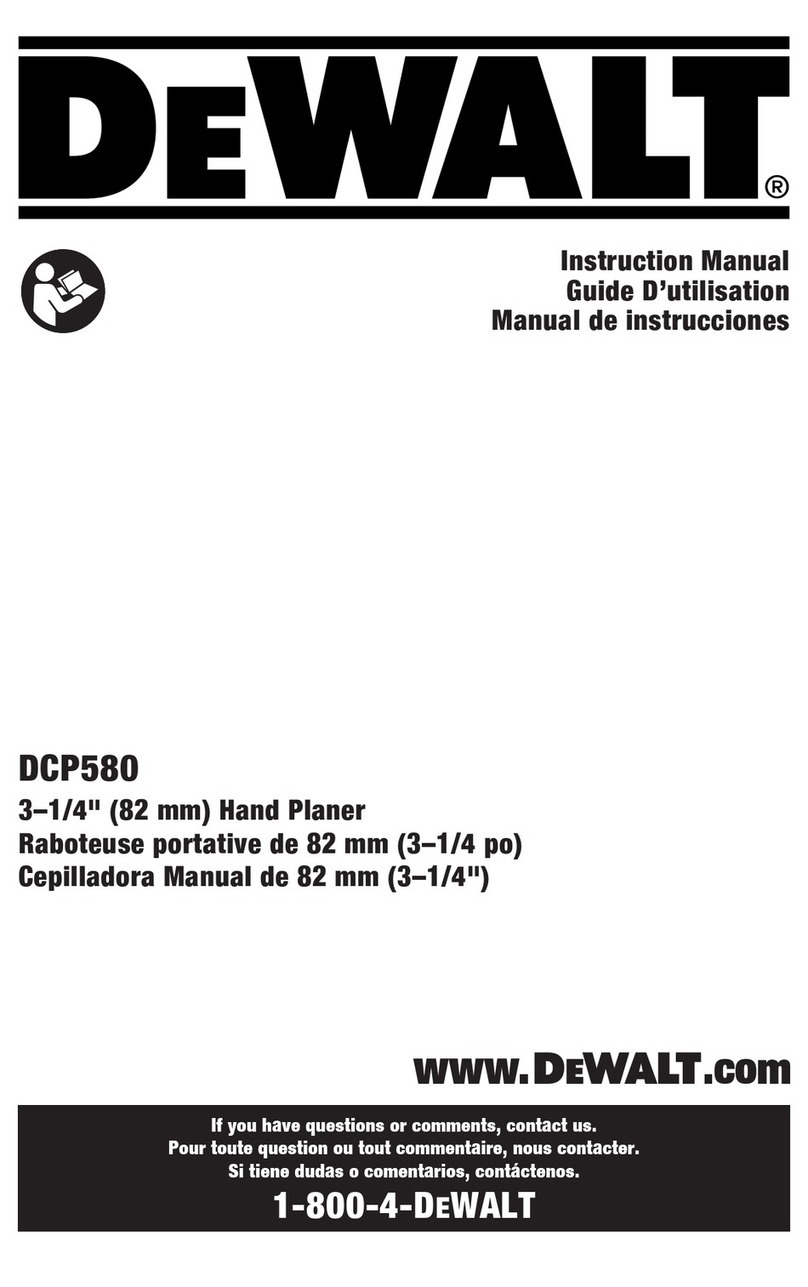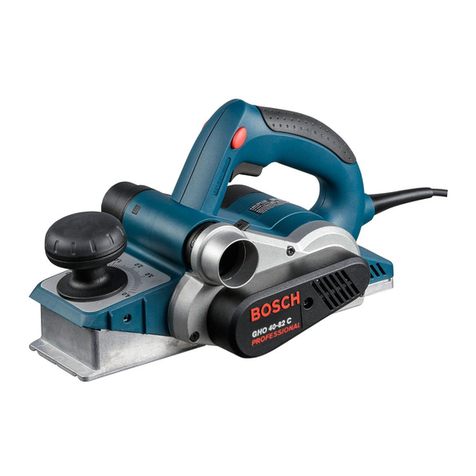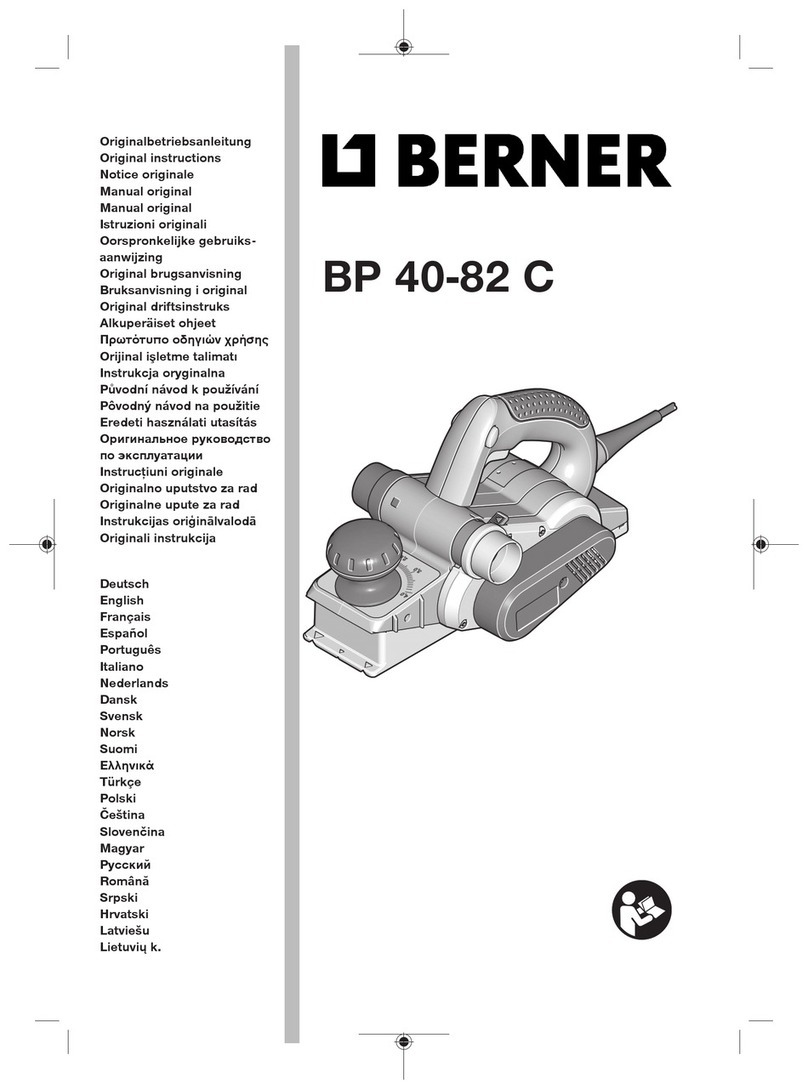16. Use outdoor rated extension cords. When a tool is
used outdoors, use only extension cords that are
intended for outdoor use and are so marked.
17. Stay alert. Watch what you are doing. Use
common sense. Do not operate a power tool when
you are tired.
18. Check for damaged parts. Before using a tool, check
that there are no damaged parts. If a part is slightly
damaged, carefully determine if it will operate
properly and perform its intended function. Check for
alignment of moving parts, binding of moving parts,
breakage of parts, proper mounting and any other
conditions that may affect the operation of the tool.
A part that is damaged should be properly repaired or
replaced by an authorised service facility, unless
otherwise indicated in this Instruction Manual.
Defective switches must be replaced by an authorised
service facility. Do not use a tool if the switch does
not turn the tool on and off correctly.
19. Guard against electric shock. Prevent body contact
with grounded objects such as water pipes, radiators,
cookers and refrigerator enclosures.
20. Use only approved parts. When servicing, use only
identical replacement parts. Use an authorised service
facility to fit replacement parts.
Warning. The use of an accessory or attachment,
other than those recommended in this Instruction
Manual, may present a risk of personal injury.
Additional safety rules for
planer thicknessers
Warnings. Before connecting a tool to a power source
(mains switch power point receptacle, outlet, etc.) be sure
that the voltage supply is the same as that specified on
the nameplate of the tool. A power source with a voltage
greater than that specified for the tool can result in
serious injury to the user, as well as damage to the tool.
If in doubt, do not plug in the tool. Using a power source
with a voltage less than the nameplate rating is harmful
to the motor.
Always remove the plug from the mains socket before
making any adjustments or maintenance, including
changing the blades.
• Fully unwind cable drum extensions to avoid potential
overheating.
• When an extension cable is required, you must ensure
that it has the right ampere rating for your power tool
and is in safe electrical condition.
• After long working periods external metal parts and
accessories could be hot.
• Ensure that you have removed foreign objects such as
nails and screws from the work before commencing.
• Rags, cloths, cord, string and the like should never be
left around the work area.
• Use safety equipment including safety goggles or shield,
ear protection, dust mask and protective clothing
including safety gloves.
• Check to make sure that all fixing screws are tight
before operating the tool.
• Ensure that the rear guard is in place before
commencing operation.
• Do not force the work piece through the machine. Let
the machine apply the correct automatic feed rate.
• Keep the feed rollers free of wood chips and sawdust. If
the movement becomes clogged, kickback can occur.
• The machine is designed for the planing of wood only.
• Do not use the machine for planing wood with
numerous knots or loose knots,
• Do not stand directly in front of the machine during
operation, stand to one side.
• Check that the blades are fitted correctly before
commencing operation.
5
